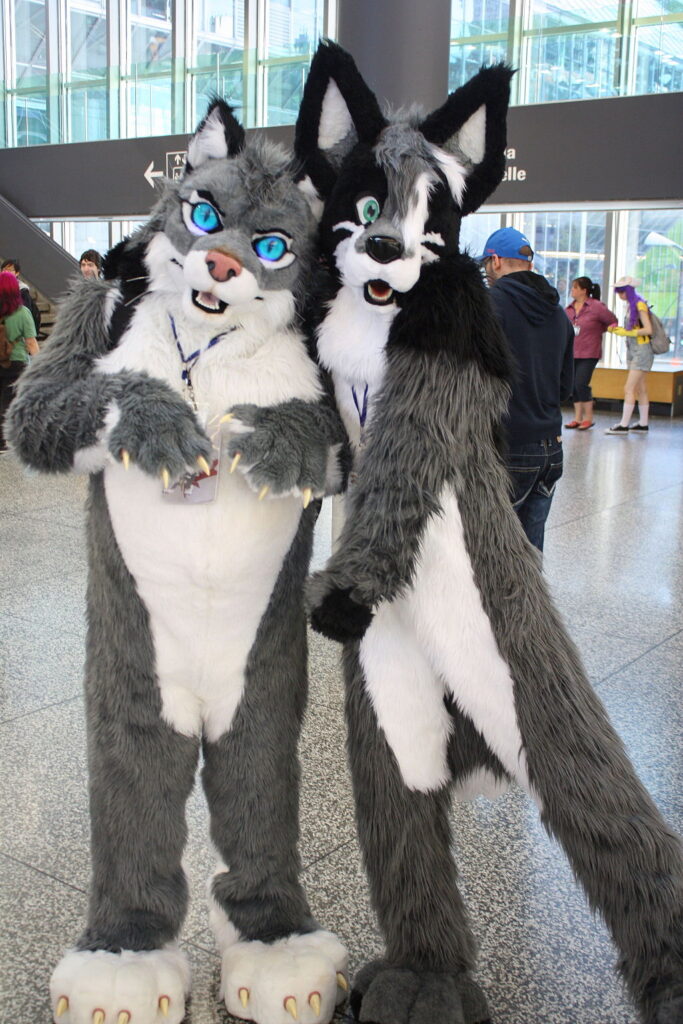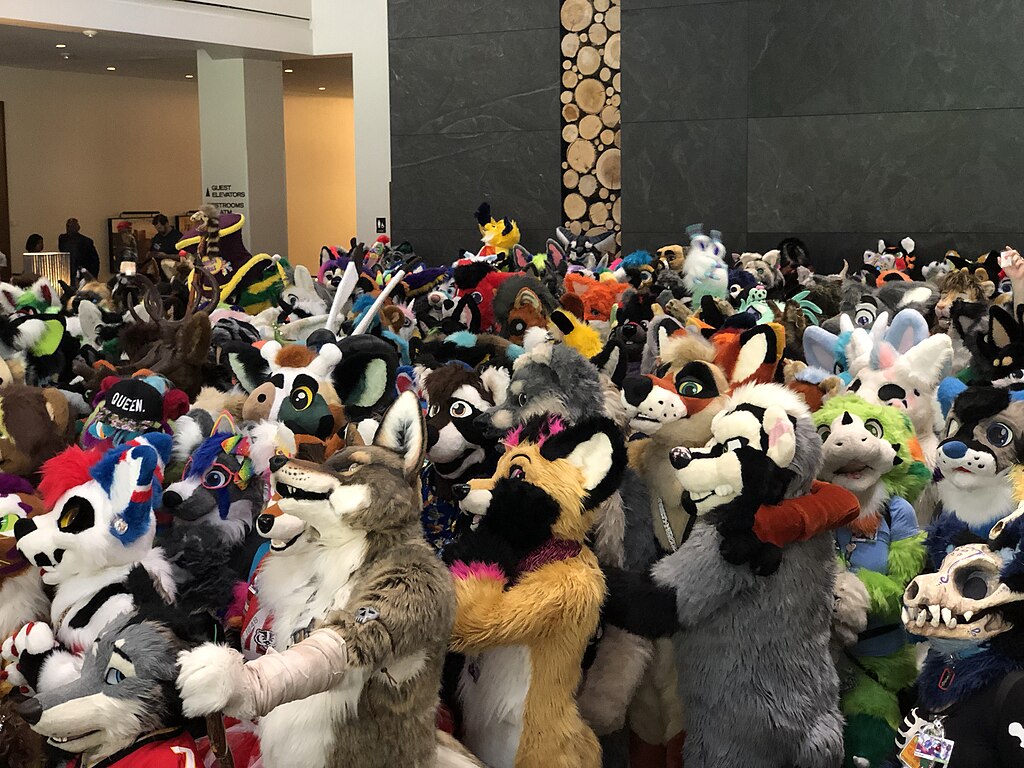From costumes to conventions – is the furry lifestyle about furry friends or furry fantasies?
This question is analyzed in “Chasing Tail: Testing the Relative Strength of Sexual Interest and Social Interaction as Predictors of Furry Identity” by Thomas R. Brooks Ph.D. and colleagues.
Published in The Journal of Sex Research, they explore the motivations behind furry identity. They examine whether social connections or sexual interests are the main driving force behind this group. With a mix of psychology and sociology, the researchers explore the fandom of furries, revealing more about this often misunderstood group.
Is the furry community merely a “fandom with sexual elements” or a “sexual subculture, with [a] fandom”?
Unmasking the Furry Fandom

Furries create and identify with anthropomorphic animal characters – animals with human traits and characteristics, without being human. People see them as a unique fandom, like anime or comics. They do typical fan activities like “fan art, fan fiction, costuming, and interacting with other furries in online forums and at in-person gatherings and conventions.”
But there’s more to the furry than simply fandom. Previous research by Hsu and Bailey (2019) suggested that sexual motivations drive a major portion of the furry community. Their study found that male-identified furries often have sexual interests related to their furry personas. Additionally, the media frequently show furries as “fetishistic or sexually driven”, focusing on the sensational rather than reality. This overlooks the significant social and creative aspects of the community.
So what really drives a furry? The answer may lie in the Social Identity Theory, which explains that people’s sense of self is based on group membership. This theory may help us understand why furries feel a strong connection to their group.
Inside the Furry Survey
The researchers conducted a survey targeting members of the furry community. Initially, they recruited 1,409 furries, narrowing down to 1,113 self-identified male participants. This decision aimed to recreate a sample comparable to that of previous studies, which focused on male-identified furries.
Participants were found on various platforms including FurScience.com, social media sites like Facebook and Twitter, chatrooms on Telegram and Discord, furry forums, and even in-person at furry conventions.
The survey included multiple questions to capture different aspects of furry identity and motivations. Examples of questions included:
“To what extent is your general interest in the furry fandom motivated by sexual reasons?”
“How frequently have you dressed in a fursuit in the past 12 months?”
“To what extent is your interest in interacting with other furries motivated by social reasons?”
“To what extent do you feel emotionally connected to your fursona?”
The measures used in the survey were carefully designed to assess various dimensions of the furry participant. These included scales for sexual and social motivation, immersion in furry media, and identification with the furry community. Participants rated their agreement with statements on a scale, allowing the researchers to quantify the strength of different reasons. For instance, the survey asked participants to rate statements like “I strongly identify with other furries in the furry community” and “Being a furry gives me a sense of ‘meaning’ in my life” on a 1 to 7 scale.
Furry Fandom According to Furries
While previous studies suggested that sexual interests kept furries in the community, this survey found the majority of them were motivated by a sense of belonging.
While some participants did report sex-related reasons for their furry persona, these were not the main reasons for their involvement. The survey reveals considerable variability in how much furries were sexually attracted to specific aspects of the fandom. For example, many participants reported sexual attraction to furry-themed media, but over half indicated that fursuits were not sexually attractive. In fact, fantasizing about or dressing up as anthropomorphic animals was not central to their sexual fantasies or habits. Instead, the survey shows that activities like consuming furry media, creating fan art, and attending conventions were more about social engagement and creative expression.

Further, the results emphasize the furry fandom as a supportive environment where members can explore their identities and connect with like-minded people.
Concerning Social Identity Theory, the results reinforce that being part of the furry community may help individuals develop a strong sense of self. The study found that furries often see their involvement in the fandom as a key part of their identity – boosting their self-esteem and overall well-being.
“Fan identities are subject to the same psychological processes and mechanisms that drive other social identities,” the authors explain, indicating that the enthusiasm behind furry fandom is similar to those in other fan communities.
These results reveal a nuanced picture of the furry community – challenging common stereotypes. By focusing on the social side, the study shows why so many individuals find solace and self in the furry lifestyle.
“Rather than conceptualizing the furry community as a sexual subculture, it may be more appropriate to view it as a fandom with unique sexual elements.” (Brooks et al)
Fur-ther Research
The researchers emphasize the need for more inclusive demographic sampling, urging future studies to include underrepresented groups such as racial minorities and gender identities. They highlight the importance of longitudinal studies to establish clearer relationships between motivation and furry identification.
Additionally, the researchers call for more rigorously validated measures, specifically for addressing sexual attraction and reasons to be a furry. Dr. Thomas R. Brooks and colleagues suggest renaming furry fandom to differentiate between those there for sexual experiences and those seeking social belonging and aesthetic appreciation.
Get Your Fur On
Exploring the furry fandom offers a glimpse into a layered community filled with creativity, social connections, and self-expression. While misconceptions exist, a sense of belonging and artistic enthusiasm drives most furries rather than sexual satisfaction.
Curious to learn more? Unleash your inner furry by attending a furry convention or joining an online community.
Furries are here for friendships and fun – not just the fur.

Hero image credit: Tyson Everick, CC BY 2.0



